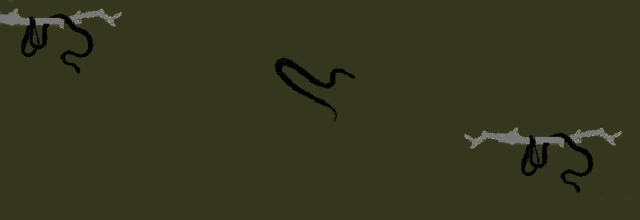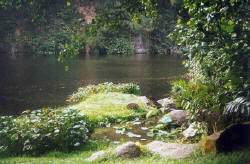Habitat
Chrysopelea paradisi is a tropical species of snake that tends to reside in southern Thailand, Peninsular Malaysia, Singapore, Indonesia and the Philippines. The whole range of this species rests inside the monsoon belt where the winds alternate seasonally from the Northeast and Southwest. Inland, this results in a rather seasonal climate with the mild and dry season lasting from November to May and a rainy season that lasts from May to the end of October. The rainy season in particular is brought about by a combination of the southwest winds carrying carrying the annual monsoon inland from the Andaman Sea and the tail end of the Pacific cyclone that occasionally passes over the tip of Thailand.
The peninsula, on the other hand, has a tendency to be less seasonal with rain at almost any time of the year due to the dry Northeast monsoon that absorbs moisture from the South China Sea and the Gulf of Thailand only to loose it over the peninsula as it passes over the Annamitic Mountains.
All in all, the monsoons dump a lot of water in the paradise tree snakes neck of the woods. On average, the peninsula receives 300 cm of rainfall annually, as compared to inland where roughly 130 cm of rainfall precipitates annually.
Temperature in this region tends to vary. On the islands and
peninsula, the temperature generally ranges from 25-28°C.
Unlike the relatively predictable temperature of the peninsula,
inland temperatures have a tendency to fluctuate more
drastically ranging from 44°C to nearly freezing in the higher
mountainous regions.
Vegetation in the region is quite diverse. The islands and peninsular region of C. paradisi's range tends to be dominated by tropical, broad-leaved, evergreen rainforests that are sparse in undergrowth. Inland Thailand on the other hand, is considerably drier and supports a deciduous forests that deal with the lack of rain by dropping their leaves. This in turn allows for various shrubs, small plants, grasses, and other general undergrowth to grow as the light reaches the forest floor.
Sadly, like many other areas, deforestation has taken its toll. The area of forest that used to almost completely cover the region, is, as of 1998, less than half its original size. As human activity in the region increases, so does deforestation and the destruction of many plant and animal species.
Cautious Climber? Parachute back down to Home. Hungry snake? Ascend to the Nutrition Branch by clicking the snake.




